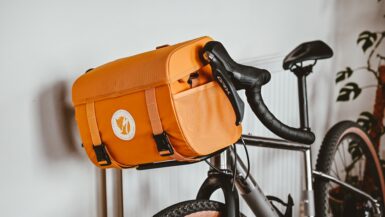Regarding outdoor adventures, it is essential to have the right clothes and gear for suitable climate and terrain conditions. Whether planning a long trek through the jungle, a mountain bike ride through the desert, or an afternoon of kayaking down a local river, the correct layers and equipment can mean the difference between an enjoyable experience and a dangerous disaster. This article will provide an overview of selecting the proper clothing and gear for your specific needs and ensuring that your outdoor adventures remain safe and enjoyable.
Weather Considerations
It is crucial to be prepared for unexpected weather changes when planning your outdoor attire and gear for various climate and terrain conditions. The first thing to remember is to check the weather forecast for the area you are visiting and pack accordingly. Layering clothing is key to keeping warm in cold climates and dressing in cool, loose-fitting clothes in hot climates. Additionally, bringing waterproof clothing and rain gear is essential in any environment.
Choose Appropriate Footwear
It is essential to wear appropriate and supportive footwear in any climate or terrain. If you plan a hike, bring sturdy, waterproof boots that offer arch, ankle, and heel support. If you are spending time in a wet area, such as a beach or river, sandals or water shoes are an appropriate option. Depending on the climate and terrain, it is also wise to bring an extra pair of warm, dry socks and insoles if your feet become cold or wet.
Consider Sun Protection
When planning your clothing and gear for any climate, prioritize sun protection. Depending on the environment, you may need sunscreen, sunglasses, a brimmed hat, and UV-protective clothing. Additionally, it is vital to stay hydrated by bringing a water bottle, a refillable water container, and snacks to fuel your adventures.
Pack Essential Items
When heading out of anything from a simple outdoor adventure to an extended outdoor expedition, you must ensure you have all the essential items for the climate and terrain you visit. Flashlights, headlamps, first aid kits, compasses, maps, and whistles are all items that should be considered when packing for any outdoor journey. It is also wise to have an emergency communication device such as a satellite phone, VHF radio, or distress beacon.
Stay Updated on Weather Changes
It is essential to stay updated on weather changes when out in the elements. Pay attention to the local forecast and leave yourself plenty of time to react and adjust based on the changing weather conditions. Additionally, bring a way to monitor the weather, such as a barometer, weather radio, or smartphone with a weather app.
By taking the time to consider the weather and plan your clothing and gear accordingly, you can make sure your outdoor journey is safe, comfortable, and enjoyable. Doing a little research before you depart can help you make sure you have the right clothes and gear for any climate and terrain conditions you may encounter.
Clothing Options
Having the right clothes and gear for the suitable climate and terrain conditions is essential to any outdoor adventure. Before you set out for your trip, it is vital to understand the weather and the terrain you may face. Researching the typical temperatures, the expected precipitation levels, and the terrain you’ll be crossing are crucial aspects to consider when deciding what to bring. Dressing for the predicted weather and terrain on your hike or outdoor adventure can mean distinguishing between a pleasant and safe experience or an uncomfortable and dangerous one.
Layering Your Clothing
Layering your clothing is a great way to ensure that you are prepared for any weather changes you might experience while out on your adventure. Layering your clothing enables you to remove or add clothing layers as the weather changes, helping you stay comfortable throughout the day. Cotton t-shirts and tank tops can serve as the base layer. Middle layers should consist of wool or synthetic fibers such as fleece or polyester to keep you warm even if wet. Outer layers should be waterproof such as nylon, and should be able to protect you from the wind.
Choosing Footwear
Finding the proper footwear for the terrain you will face is essential for comfort and safety. Sturdy boots or shoes with good tread and arch support are ideal for most terrain. Ensure the boots are waterproof or water-resistant and have enough cushioning to protect against impact. If the terrain is particularly rocky or unstable, consider investing in a good pair of hiking boots.
Accessorizing for the Climate
The accessories you bring for your adventure can help protect you from the elements and help you stay comfortable. A wide-brimmed hat is essential to protect your face and neck from the sun, especially if you plan to spend significant amounts of time in the sun. Sunglasses are also necessary to protect your eyes from the sun’s harsh rays. A beanie or a scarf can help keep your head and neck warm if you are hiking in a cold climate. Trekking poles or a walking stick may also be helpful, depending on the terrain.
Conclusion
Choosing the right clothes and gear for the suitable climate and terrain conditions is essential for any outdoor adventure. By understanding the expected weather and terrain, selecting the right apparel and accessories, and layering your clothing, you can ensure that your trip is safe and comfortable.
Footwear Selection
Footwear selection is an important consideration when choosing the right clothes and gear for a particular climate and terrain. The wrong type of footwear can cause severe discomfort and even injury. Here are some tips for selecting the best footwear for your outdoor adventures.
Assessing Your Needs
The first step in making a good footwear selection is to assess your needs. Consider the activities you plan to do, the terrain you will cover, and the climate and weather conditions you will encounter. Each of these factors can influence the kind of footwear you should choose.
Understanding Different Footwear Types
Once you’ve assessed your needs, it’s essential to understand the different types of footwear available. Hiking boots, running shoes, and water shoes are all designed for various purposes. Knowing each kind of footwear’s advantages and disadvantages will help you make an informed decision.
Consider Breathability and Waterproofing
When selecting your footwear, it’s important to consider breathability and waterproofing. For most climates and terrains, breathable, waterproof footwear is the best choice. This will help to keep your feet comfortable and dry in wet conditions.
Get the Right Fit
Getting the right fit is essential for comfortable, safe footwear. It’s vital to ensure the width, length, and height of your footwear fit correctly. Choosing a shoe with an appropriate amount of cushioning and support is also essential.
Think About Durability
When selecting footwear for outdoor adventures, it’s essential to consider the level of durability you need. Look for shoes built to handle the terrain and climate conditions you’ll likely encounter. This will help to ensure your boots last through the journey.
Choose Quality Materials
Finally, choose a pair of shoes made of quality materials. Look for shoes made of durable materials such as leather or synthetic leather. This will help to ensure your shoes last as long as possible.
When selecting footwear for your outdoor adventures, there are many factors to consider. Assessing your needs, understanding different types of footwear, and selecting quality materials are all important steps in selecting the proper footwear. Following these tips ensures you choose the best footwear for your climate and terrain conditions.
Gear Considerations
When selecting the right clothes and gear for a particular climate or terrain, it’s important to consider the elements that may affect your comfort and safety. Depending on the environment, specific clothing and gear items can be beneficial in protecting from the elements.
Fabric Choice for Climate
For hot climates, lightweight, breathable fabrics like cotton or linen are best for staying calm. In cold temperatures, wool, fleece, or insulated fabrics can help to keep the body warm, while wicking fabrics can help to keep moisture away from the skin.
Clothing Layers
Layering clothing is a great way to keep the body warm in cold weather while also providing breathability in warmer climates. A sound layering system generally includes a base layer, a mid-layer, a fleece, and an outer layer, such as a shell jacket.
Head and Hand Protection
A hat and gloves are essential for cold weather and can protect from the sun in hot climates. A wide-brimmed hat should also be considered to keep the face, neck, and ears covered.
Footwear
Proper footwear is essential for climate and terrain conditions. Choosing a waterproof and breathable option, such as an insulated hiking boot, is crucial in cold weather. A lightweight, breathable shoe is ideal for hiking or running in warmer climates.
Gear Considerations
When selecting gear for a particular climate or terrain, it’s important to consider items that can provide safety and convenience. Depending on the activity, items such as a water bottle, a flashlight, a compass, and a first-aid kit can save time and energy. A map may also be necessary for navigating unfamiliar terrain. Additionally, any essential food and supplies should be taken into consideration. It’s also important to consider how much gear can be comfortably carried and how much weight is needed for the given activity.
Tips for Adapting to the Elements
Suitable clothing and gear are essential when making the most of any outdoor experience. Whether you’re exploring a desert, taking a mountain trek, or surfing in the ocean, being prepared for the climate and terrain conditions is critical. Layering clothing to adapt to changing temperatures and bringing the necessary gear for a comfortable journey will reduce the risks and help you enjoy the adventure. A little extra research and planning go a long way in helping you stay safe, comfortable, and protected on your outdoor excursions.






Leave a reply